|
What if I told you that there was a source of annual fund dollars out there that could cost you 18 cents to raise a dollar and raise those funds very quickly in a short period of time?
And what if I told you that you probably were not currently utilizing this particular source of revenue for your institution? You would be interested, right? Let me tell you what the secret source of revenue is . . . Facebook ads. Yep, Facebook ads. Believe it or not, I recently did a test in which I ran Facebook ads for year-end fundraising and the cost to raise a dollar was as low as 18 cents. In all honesty, this test grew out of the fact that I work for a very small shop and I’m the only fundraiser. I needed to come up with a calendar year-end giving campaign for our social media. Last year I spent a lot of time crafting unique messages to be used for each day in December. This year I was just running out of time and had no real creativity left in me. So instead, I decided to craft three very targeted year-end promotional messages and boost them significantly with Facebook ads. I had a little bit of extra money in my budget that I re-purposed in order to do this. Not a ton. I'm talking less than $1,200 to experiment with. So I divided my ad dollars up between three boosted ads. The first two were to promote general giving. One was targeted to those outside of our normal constituency on Facebook (people who don’t currently like our page). The second I boosted specifically to people within our community (who currently like our page). The third leg of this campaign was a specific boost to encourage our constituents to become “sustainers” (recurring monthly donors). All three of these campaigns were successful. First, our campaign outside of our normal constituency reached over 44,000 people who may or may not have ever heard of the school before but had our affinity with the religious community that we serve. We also garnered 14 new page likes. In the general year-end giving part of the campaign, over 500 people clicked on our giving website. We got 24 gifts out of this campaign, totaling almost $5,000. The results came out to only $0.18 to raise a dollar! This was revelatory to think that we could not only do public relations and communications work, developing our constituencies on social media, but at the same time raise some serious money The monthly sustainer campaign was also quite successful. We did not spend very much on that campaign, only about $100 but we got 4 new sustainer donors. These new donors represent $65 monthly (or $780 more per year). That doesn’t even fully represent the lifetime value of those monthly donors. If you just take the first year of value from those monthly donors then it was 34 cents to raise a dollar for this micro-campaign. I would argue it is well worth it when you consider that most of these donors will roll on from year to year as ongoing monthly donors I was surprised that something like Facebook ads could actually work for fundraising. I think my bias against it is because we want these digital mediums to be a free way to reach people. We know they have power to reach people but don’t want to pay for it. And yet, we know that mail and phone are worth the investment. Why are we not willing to invest real money in the digital mediums yet? Facebook (at least) is here to stay. It’s a reliable way of reaching people and we should start thinking about Facebook (and other forms of social media) with the same mindset we use when we think about phone to mail. Namely, that you have to spend money to make money. We need to start being smart about spending part of our fundraising budget on social media. Run some tests. Look at them with an eye to return on investment. Track the same kind of statistics that we track for phone and mail fundraising, including cost to raise a dollar. If you haven't been utilizing Facebook ads in order to grow your constituency on Facebook and raise real money, I would encourage you to undertake a test. Maybe run your fiscal year-end campaign or use it around a day of giving or some other point of urgency. You can gain new donors, new Facebook fans, and real money. You can do all those things to the tune of 20 cents to raise a dollar. I would argue it is worth the investment. Can you lobby for a little extra money in your budget ($500 or $1,000 or $2,000) to experiment with this medium? If it works, put it into your plan for next fiscal year. Do you already do Facebook ads? If not, is this something you could try? Let me know how it goes. As always, comments and questions are welcome and encouraged! Cheers, Jessica PS - If you liked this post, you might also like these:
PPS - If you found this article helpful, please comment and let me know. Also subscribe to Real Deal Fundraising so you don't miss a post! You'll get my guide to Call Center Games for Free! Building and maintaining a culture of philanthropy is hard work. It is deep work that takes years to build and moments to destroy. But having a healthy culture of philanthropy makes work more fun and makes fundraising easier. It’s worth having a periodic check-up to assess how your institution is doing.
Answer these questions for your institution: Board Support
Staff Support
Alumni support (or Grateful Patient support)
Fun Factor
Communications
Stewardship and Donor Relations
Other questions to think about:
How did you feel about the assessment? Where are you doing well? Where should you improve? As always, comments and questions are welcome and encouraged! Cheers, Jessica PS - If you liked this post, you might also like these:
PPS - If you found this article helpful, please comment and let me know. Also subscribe to Real Deal Fundraising so you don't miss a post! You'll get my guide to Call Center Games for Free!
Did you get at least 2 good ideas to pursue from this list? Which one was most helpful? Do you have any tips for my readers struggling to make their direct mail copy fresh? Comments and questions are, as always, welcomed and encouraged! Best of luck in your copywriting! Cheers, Jessica Cloud PS – I TOLD YOU EVERYONE READS THE PS! If you liked this post, you might also like these:
PPS - If you found this article helpful, please comment and let me know. Also subscribe to Real Deal Fundraising so you don't miss a post! You'll get my guide to Call Center Games for Free! Tis the Season for Strategic Planning! Now is the time of year that many higher education fundraisers are doing two things:
I totally understand you are busy. Trust me. Between travel, work, and personal responsibilities, I’m stretched too. But, I think you should consider one more project: a benchmarking study. It's the missing piece of your strategic planning process. A benchmarking study is a survey of peer organizations that will give you insightful information about what your program should be doing. I assure you that this process doesn’t take long. The data you obtain will be so useful to you, I guarantee you that you will not regret investing the time. A benchmarking study can help you:
How do I get started? I have no time for this… This doesn’t have to take a long time. If you employ an intern or student worker, have them help you with the process. The first phase of identifying your peer institutions is the hardest part. Just hang with me and you'll find you can fit this in and that the long term benefits (to your institution and your own career) are worth it. Here’s the 5 phase process for doing a benchmarking study:
Phase 1: Research List your “peer institutions”. You know at least some of them. They might be your in-state rivals or other nearby institutions of similar size, age and student population. Your peer institutions are the ones that your boss always asks about in meetings: “What is XYZ College doing in this area?” Note: There is a big difference between a peer institution and an aspirant institution. An aspirant institutions is one that your institution wants to be like but isn’t. They are a significant level-up from you. They may have 50-100 years more institutional history, a much larger endowment, a larger student body or other significant indicators that make them just a bit beyond your organization. Sometimes leadership or volunteers believe a rival institution is a peer institution when it is actually a aspirant institution. When I was at Southern Miss, we were frequently compared with Mississippi State and Ole Miss, but Southern Miss is actually much more like Eastern Carolina University or the University of Memphis than either of those in-state rivals. It’s a bit dangerous to confuse an aspirant institution with a peer institution. You would be comparing apples to papayas. However, you can include them in your study because they are a great source of inspiration and ideas. Just mark them clearly in your data as aspirant and understand that they will likely have bigger budgets and bigger results. If you only can come up with a few institutions, do some internet searches to find similar organizations. You might google, “liberal arts colleges more than 100 years old” or “southern universities with endowments of less than $100 Million”. I recommend you have a list of 10-12 peer institutions and perhaps 3-5 aspirant institutions because not all the institutions will respond. Once you have a short list of potential peer and aspirant institutions, you (or your intern) should do a bit of research. You need to identity the equivalent program director at those places. For example, if your study is for annual giving, you will want to find the Director of Annual Giving at each place on your list. Record this staffer’s name, title, phone and email address in a spreadsheet. Phase 2: Create survey I recommend you ask a mixture of questions in these categories:
You can follow this process to design your survey for any area of development but here is what I’ve used before for annual giving. Annual Fund Questionnaire
Phase 3: Solicit participation Take your own survey for your institution putting in your data and make sure each question is clear and makes sense. When you do this, time yourself, so you have an accurate range of how long this will take. Construct an email to the staffers you recorded contact info for in Phase 1. Let them know that you would love for them to participate and the survey will only take XX minutes. (I would recommend that it take no longer than 15 minutes.) Then, and this is important, tell them that you will share the results of the survey with them to benefit their program as a thank you for their participation. Provide a deadline and let them know that you’ll remind them closer to the deadline. Keep your window not longer than 2 weeks out, otherwise there is no urgency to participate. Remind them 4-5 days later if they haven’t participated and again closer to the deadline. You can even through in a phone call 3 days before the deadline, especially if there is a school that you need feedback from for political reasons. Phase 4: Analysis Review your survey results, noting where your institution does well and where you fall short. What are the great ideas that stick out? What resources do other organizations have that you don’t? How might you get access to those resources? Compose your results into an executive summary sheet of 1-3 pages that can be included with your strategic plan or sent to relevant stakeholders as a stand-alone report. This report will be for your institution. You'll also need to consolidate and package up the raw survey results to send to your peer participants in Phase 5. Phase 5: Follow-Up Be professional and prompt with your follow up. Send a copy of every survey or the consolidated results to all survey participants. Do this within 2 weeks from the survey deadline. Thank them profusely and perhaps include an invitation to establish an on-going professional support relationship. Maybe you start a Facebook or LinkedIn group where you can compare data throughout the year on an ad-hoc basis. These relationships are of great value to your institution and to your own career. Conclusion This process shouldn’t be intimidating and when you are done with it, you will have some important tools in your strategic planning process. I did this exact process at The University of Southern Mississippi to prove my point that the annual fund had historically under-performed. The benchmarking study certainly showed the under-performance but it also showed similar institutions were raising so much more money, which meant there was no reason Southern Miss couldn’t do it too with strategy, consistency and investment. I’m happy to say that’s exactly what happened. I’m pleased to report the program has now exceeded the five year goals I set for it back in 2011-2012 when I did the benchmarking study. If you do this project, you’ll have some persuasive data to lobby for changes to your program. Plus, you’ll be seen as a self-starter not only in your office or institution but in the broader development community as well. It’s worth it. Have you undertaken a benchmarking study? Why or why not? What conclusions came out of your study? As always, comments and questions are welcome and encouraged! Cheers, Jessica PS - If you liked this post, you might also like these: PPS - If you found this article helpful, please comment and let me know. Also subscribe to Real Deal Fundraising so you don't miss a post! You'll get my guide to Call Center Games for Free! Connecting with a donor or potential donor is so vital before you ask for a gift. It's like removing many of the roadblocks between you and that "YES!" response you want.
People want to give to people they like. It's not much of a secret. Ultimately, as a fundraiser you are a conduit for the relationship between that donor and the institution (not with you personally) but they must enjoy speaking with you to want to continue a relationship with the institution. This is an important skill for any fundraiser to develop, from phonathon callers on up to executive directors, deans and development officers. I have been to MANY call centers where they use the same tired rapport-building questions year after year after year. We cannot let this happen. No one wants to spend their precious time telling a new person why they haven't been back to campus lately just like they did last year. Bad rapport-building has the opposite effect on the donor than that which we wish to cultivate. The first rule of building rapport is it must be DIALOG not MONOLOGUE. You must ask questions that will solicit meaningful conversation and back and forth. You (no matter if you are a student caller or the Vice President of Advancement) must not deliver a litany of great-stuff-happening-at-our-institution without stopping for breath. So, following this rule, we must construct meaningful rapport building questions. The second rule about rapport building is that these questions get stale. Every year (at least) new rapport builders should be generated and put into rotation. Here is some guiding criteria for generating these questions. Rapport building questions should:
What are some examples of strong rapport-building questions?
Does your rapport building need a refresh? Do you have some favorite rapport-building questions that I forgot to mention on my list? Comments and questions are, as always, welcomed and encouraged! Cheers, Jessica Cloud PS - If you liked this post, you might also like these:
PPS - If you found this article helpful, please comment and let me know. Also subscribe to Real Deal Fundraising so you don't miss a post! You'll get my guide to Call Center Games for Free! One of the most important alliances at a nonprofit organization is between the fundraising staff and the marketing/communications staff. Making sure that the message about the funds needed and how those funds connect to mission is a crucial element of success.
Despite the importance of cooperation, it can be frustrating for fundraisers to work with public relations officers who don't have much experience with advancement work. The communication folks may find messaging about fundraising to be crass or pushy. Consequently, they might not want to give development the appropriate amount of space in the marketing channels. Here a few tips I've used to improve the working relationship between development and marketing/communication colleagues: EDUCATION Educate them on what it takes to do your job! Let them know what your goals are and let them know how many messages and how many different channels you need to be participating in order to reach those goals. Show them statistics and analytics. Help make your goals into their goals. HELP THEM HELP YOU Make it as easy for them as possible to assist you. That means drafting a lot of your own messaging whenever possible, selecting your own images and putting all of that together into a comprehensive plan. Whether the plan is for social media or email or even your direct mail, if they assist you in managing any processes, be very clear about dates, times, and details. Having your plan together will help get them on board. SET THE TONE FOR TEAMWORK Like any important colleagues, acknowledge what it is that bring that they bring to the table that is unique. Make them understand that you're on the same team. As fundraisers, we strive to be donor-centric and therefore we are advocates for our constituents. Assure them you don't want to over-message to your constituents either. You're both playing on the same team and the goal of that team is to bring in the resources necessary for the organization to complete its important mission. BE FIRM ABOUT THE CALL TO ACTION Being a team player doesn't mean being a pushover. You understand the best way to motivate your prospects to give. Don't let your calls to action get buried in more general promotional materials. Insist upon clarity in this portion of your communication and you will see success. Similarly, be firm about deadlines. More general marketing materials aren't as time-bound as annual giving. It's called annual for a reason. You only have one year to get it done. FOCUS ON STORYTELLING Play to the strengths of your communications colleagues by asking for their assistance with storytelling. Framing a moving and emotional narrative will only make your fundraising materials stronger. This is a skill that should come very naturally to your communications allies. Tap their creativity in this area and not only will your messages improve but your colleagues will feel like an integral part of the team. I've worked at institutions where the dynamic between these two departments was less-that-optimal and it hampered fundraising productivity. I've also worked at institutions where there was a team atmosphere and mutual understand of goals. Everything is much easier when you focus on relationships first and foster learning and communication surrounding goals. How does the development team work with the communication staff at your institution? Do the two groups function as partners or as a client-service relationship? Comments and questions are, as always, welcomed and encouraged! Cheers, Jessica Cloud PS - If you liked this post, you might also like these:
PPS - If you found this article helpful, please comment and let me know. Also subscribe to Real Deal Fundraising so you don't miss a post! You'll get my guide to Call Center Games for Free! We like choices, right? At any given coffee shop, you get to be king (or queen) of the world for a moment as you decide whether you want coffee or tea, what size, what type of roast, caffeinated or decaf, and more. Malcolm Gladwell in his TED talk on “Choice, Happiness, and Spaghetti Sauce” confirms the link between customization and happiness. We are happier when the market provides us with “horizontally segmented” choices: like dozens of varieties of spaghetti sauce: spicy, chunky, thin, with cheese, etc. Clearly, we should be providing the same buffet of options for our donors, right? Long drop down lists of designations on our website? Eight different ask amounts on our direct mail reply cards? Won’t this make our donors happy? I would argue that it will not make them happy. And on top of that it will hurt results for our mission. Here’s the difference between endless varieties of spaghetti sauce and giving: The donor sees you and your fundraising materials as ambassadors to the mission of the organization. Donors are looking to staff to inform them of the needs of the institution and its priorities. If you provide so many choices (in both ask amount options and designations) the message the donor receives (consciously or not) is that it does not matter how much I give or what I give to, therefore it does not matter THAT I give at all. Having umpteen varieties of spaghetti sauce does not communicate a subtext that spaghetti sauce is unimportant. But, by giving an overabundance of options to donors, we unfortunately communicate that our missions are not important. Let me restate this to make it clear: If you present a range of ask amounts options that too wide and varied, the donor will feel no urgency to act because he or she has no guidance as to how much the organization needs at this time. If you present a list of designations that is too long, it communicates that the organization does not have a clear set of priorities. Furthermore, if you do not do the legwork to write a customized letter with a targeted appeal for one designation with tailored ask amounts, the donor learns that you do not KNOW them and therefore you don’t value their contributions. If you’ll take any amount for any fund, why bother giving any amount for any of your funds. Here’s an example of the reply cards sent out the year before I arrived at one of the previous institutions I worked for: Too many choices of ask amounts. Also, the choices were static not variable text ask levels (meaning all the donors got the same list of choices). The $1,000 starting ask was just high enough to scare away modest donors and low enough to insult those with high capacity. This mailing should have been a breakout success since it was a centennial mailer. As it was, the results were less than lackluster. Also, all of those designation choices make it seem like the college didn’t care where you gave just that you gave something. This is true for many colleges and universities who are focused on improving alumni participation rates. (For the record, there is nothing wrong with this as a pitch. The problem is most organizations operate on that assumption without informing donors that what you need is participation. Be clear.) However, if what you want is to guide the donor to increase their commitment to the institution, a broad swath of designations won’t work. They want to know that you know their priorities and the priorities of the institution. Match those with a clear case for giving and they will send in checks. See, if you really listen to Gladwell's TED Talk, you would see that Howard Moskowitz (the guy who "discovered" horizontal segmentation and thereby is responsible for dozens of varieties of spaghetti sauce) didn't exactly advocate for countless choices. (In other writings, Gladwell discusses analysis paralysis, a condition where too many choices makes deciding impossible.) Moskowitz saw in his research that people's preferences "clustered" around 3-4 varieties of spaghetti sauce. There is a happy medium between no choice and too many choices. It's Goldilocks. Not too many choices, not too few. I call this the principle of limited choices. Knowing this, here’s how I modified the reply cards during my first year at this institution. Don’t you feel calmer looking at this card? As a donor, you still have choice available but you understand clearly the hierarchy of the university’s priorities and a sense of the level of gifts that the institution wants to receive.
Behind the scenes in the production of these letters, there is a segmentation strategy at work which customizes the letter content and ask amounts to the donor, but what the donor feels is clarity. Upon implementing this more streamlined system, the average gift given through direct mail went from $118 to $149 and the response rates increased from 0.36% to 0.85%. (This was a large state school with lots of non-donors.) The mailings garnered over $41,000 more than the centennial mailer sent the previous year. The principle of limited choices, combined with smart segmentation is powerful stuff. Confused donors don’t write checks. Give them a well-constructed ask and a little direction and you’ll do much better. Don’t spoil your donors for choice. How many ask amounts do you offer in your solicitations? How many designations do you promote as choices? Comments and questions are, as always, welcomed and encouraged! Cheers, Jessica Cloud PS - If you liked this post, you might also like these:
PPS - If you found this article helpful, please comment and let me know. Also subscribe to Real Deal Fundraising so you don't miss a post! You'll get my guide to Call Center Games for Free!
Don’t get me wrong. I am a fan and advocate of automated calling software. And I’ve been spoiled in my career, working for large state universities with the resources to either outsource the calling program or to have an in-house program with appropriate calling software.
In the past, I would cringe when a colleague would tell me they were running a manual/paper phonathon. But there’s a reason why they say necessity is the mother of invention. I now work for a small independent seminary that is on a shoestring budget. This summer, I did some analysis and determined that what the program really needed was a phonathon. I decided this for a few reasons:
You really only need 3 things to have a phonathon:
CALLERS I figured out my maximize number of callers and caller hours that I could afford to pay based on a competitive hourly rate for the location (Berkeley, CA). Then I set about recruitment. Here are some of the graphics I used to recruit students callers.
I used my 3 favorite interview questions for student callers. You can read about those here. I hired 4 students and 1 graduate who wanted to volunteer her time as a service to the school.
EQUIPMENT Now I needed equipment. At first, I was thinking through how much long distance would cost and whose offices we could use in the evenings. Then I went back to drawing board: Why was thinking landlines when I preach all the time that cell phones are the future of phonathon? I decided to go mobile. I ordered simple, Samsung flip phones which had a headphone jack so we could utilize headsets. I bought these Voistek noise cancelling headphones that would work with the phones and free the caller to move anywhere in the room. I bought some of the headsets with only one ear pad and some with two. The callers overwhelming preferred the double headset. The headsets, while very affordable ($29) also had good sound quality. Here are the links for the phones and headsets I selected. (Yes, these are affiliate links. I've actually used these products and I'm sure they'll help you start a pop-up phonathon. If you purchase, I get a small percentage to keep the choice content coming here on Real Deal Fundraising. Fair trade, huh?)
These phones are already configured to work with a Verizon go-phone plan, which was far cheaper than long distance fees. They are also used phones so they are super-cheap – less than $17 each. My phonathon campaign was scheduled to be one month long so we paid for one month of prepaid phone access: $50 for each phone. Bonus: when you go to the Verizon store to sign up for your multiple prepaid, burner phone plans, you feel like a bad guy from a Law and Order SVU episode!
Total for each phone “station”: $96 Total to equip my five callers: $480 OVERALL SHOESTRING BUDGET I also spent $100 on 4, $25 gift certificates to use as weekly incentives for performance. Overall my budget looked like this:
PROSPECTS As for data, I pulled the prospects via queries in Raiser’s Edge and then used that spreadsheet to create calling sheets via a mail merge. We went through a couple of iterations to get the information in the most intuitive place for the callers but ultimately it worked well. Overall, the program raised over $15,000 which was a great return on investment and we added over 25 new recurring gift donors as well. If your institution doesn’t have a huge budget but needs the personalized contact that a phonathon program provides, you can create a “pop-up” phonathon program on a shoestring budget that is efficient and effective. Do you outsource, use automated software or have a manual phonathon? Or do you need to start a pop-up phonathon for your institution? Comments and questions are, as always, welcomed and encouraged! Cheers, Jessica Cloud PS - If you liked this post, you might also like these:
PPS - If you found this article helpful, please comment and let me know. Also subscribe to Real Deal Fundraising so you don't miss a post! You'll get my guide to Call Center Games for Free!
Once you’ve been told never to call back, been hung up on countless times, and told “no” in so many variations ranging from “I’d love to, but I can’t afford it” to an expletive-filled, irrational rant, you just don’t worry about it anymore. Callers carry this confidence into their working life whether they remain in fundraising or not. It’s like a secret superpower from working in the call center.
Not only do former phonathon callers have mad phone skills (friendly, engaging, polite, etc.) they have a rocking perspective on how to approach difficult situations. Smile and you will change your chances of getting what you want. Believe you can do it and you can.
I still talk on the phone for hours a day as part of my job. Even though I’m an extravert, after I’m done with work, I’d rather have my nails pulled out than talk on the phone for “fun”. This pattern plays out amongst my friends who worked in call centers too.
Either way, though, call center work can take a naturally competitive person and turn them into an Olympic champion of smack-talk. If you were a caller, you wouldn’t think twice about kicking your friends off the island if it meant they stood between you and a $25 Red Lobster gift card. Former phonathon callers exhibit this good-natured ruthlessness well beyond college and employ this trait in many different fields of endeavor.
Doing all of this when you know that your supervisor is listening in and you’re being evaluated, also no sweat. Phonathon callers can get it all done flawlessly.
Everyone who has been a caller has selected the wrong script, got lost in the middle of a sentence, drawn a blank on the name of the institution they are calling for, or called the prospect by the wrong name. If you take yourself too seriously, you just won’t survive in phonathon. A sense of humor is a must.
Student supervisors and call center managers give callers tips on everything from overcoming objections to how many times you say “umm” in a sentence to the quality of your voice itself. You can spot a former phonathon caller anywhere because they come to crave the kind of pointed and applicable feedback they got in the call center. They crave it because when implemented it immediately impacted results in a positive way.
Many great callers learned to read or complete homework assignments while the phone was dialing. You also learn to prep your script, ask your supervisor a question on mute, and place a bookmark in your chemistry book all while your prospect tells you about the Homecoming court of 1954. When you’re done with all that, you seamlessly transition back into the conversation with a “How wonderful! Mrs. Smith, I don’t want to take up too much more of your time tonight. Let me tell you why I’m calling…”
In the call center, we become emotionally dependent upon thermometers, countdowns, and other displays of our progress and performance. For me, it manifests in the use of my bullet journal with lots of colors and goal charts. Likewise, I love old school, goofy clip art with simple cartoonish lines. I like to use them in presentations to make folks laugh but also it brings me back to my call center days when results were often tied to being as goofy as possible to get the attention of the group.
This benefits these individuals later in their life because they aren’t afraid to negotiate for a raise, ask a spouse about preparing a will or be persistent to get a sale. I hope you had as much fun reading this post as I did putting it together. What other traits do you think come from working in a call center or in fundraising in general? If you were a phonathon caller, do these seem true for you? Comments and questions are, as always, welcomed and encouraged! Cheers, Jessica Cloud PS - If you liked this post, you might also like these:
PPS - If you found this article helpful, please comment and let me know. Also subscribe to Real Deal Fundraising so you don't miss a post! You'll get my guide to Call Center Games for Free! 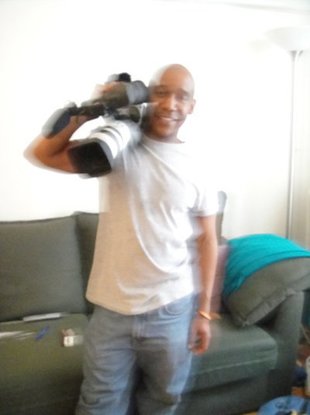 Video is more and more a huge part of the storytelling process for fundraisers. It's a great way to communicate the impact of philanthropy in the world. But, most fundraisers aren't video professionals. Once you have your video done, what are the best practices to get your constituents to watch it? I asked my friend and colleague, Ndlela Nkobi, that question. Here are his 5 best tips for getting your message seen! Enjoy! -- Jessica Cloud, CFRE Congratulations on finishing your organization’s video! After weeks (sometimes months) of planning, shooting, and editing, you have finally uploaded your film to YouTube. Now what? How do you make sure that your video gets the views it deserves and has its intended impact? Though there are no guaranteed ways of making your video go viral, here are some steps to make sure the people who need to see the video actually see it, watch it and take action. 1. Reinforce Your Call to Action Videos are generally created to get people to take some action (sign a petition, donating, joining a mailing list . . .) and your call to action in your video is where you ask your audience to take that action. Make sure you reinforce that call to action whenever you get a chance (your website, YouTube, your platforms). The ultimate success of your video will be based on how many people take you up on your call to action. 2. Have a Great Thumbnail Pick an engaging still image to give your audience a quick snapshot of your video. That thumbnail is also the image that is generally automatically used when the video is shared on social media and on platforms like WordPress. Consider creating a custom thumbnail that could also includes words that would further draw the viewer in. 3. Pay Attention to your YouTube Descriptions, Titles, Tags The title, description and tags you use on YouTube will not only help people find your video when they search for related content but they should also draw people in to watch the video. Not everyone is going to see the video on your website so give your viewer all the information they need to take the next step in your video description. 4. Place Video on Your Website Placing your video on your website gives you much more control over how the video is presented to viewers with things like the call to action, video placement and supporting text/images/graphics. 5. Promote the Video on Your Platforms Once the video is ready on YouTube and on your website, share it widely on your various platforms (Facebook, Twitter, mailing lists, . . . ) Your platforms will be one of the main ways that the people in your community find out about your video. Don’t be afraid to repost content (especially on social media) to make sure as many people see your post as possible. Bonus action: Check Your Analytics Here is another area where you get to define what success looks like for your video (or campaign). Whether you are looking at Google Analytics or YouTube analytics (ideally you are doing both) this is where you get to see how successful you were with things like page views, videos views and how long people are looking at your video. It is also important to look at engagement (likes, shares, comments . . .) Analytics and engagement are matrices you use to help you plan for the next videos you are working on producing. About the author: Ndlela Nkobi is a filmmaker and online video content creator based in New York City and Johannesburg. He works with small businesses, nonprofits, consultants and artists to connect with their clients through the use of video. You can see his work at ndlela.tv. Ndlela Nkobi has worked for Center for New Media Teaching and Learning (Columbia University) and Third Sector New England (Boston, MA). He has worked with Center for Environmental Research and Conservation (Columbia University), New York City Department of Education, Nonprofit Consultants Network (Boston, MA) and Starr King School for the Ministry (Berkeley, CA). Hi readers, I hope you enjoyed this guest post. Do you have additional tips for how to get the most reach on promotional videos? Comments and questions are, as always, welcomed and encouraged! Cheers, Jessica Cloud PS - If you liked this post, you might also like these:
PPS - If you found this article helpful, please comment and let me know. Also subscribe to Real Deal Fundraising so you don't miss a post! You'll get my guide to Call Center Games for Free! |
Jessica Cloud, CFREI've been called the Tasmanian Devil of fundraising and I'm here to talk shop with you. Archives
June 2024
Categories
All
|
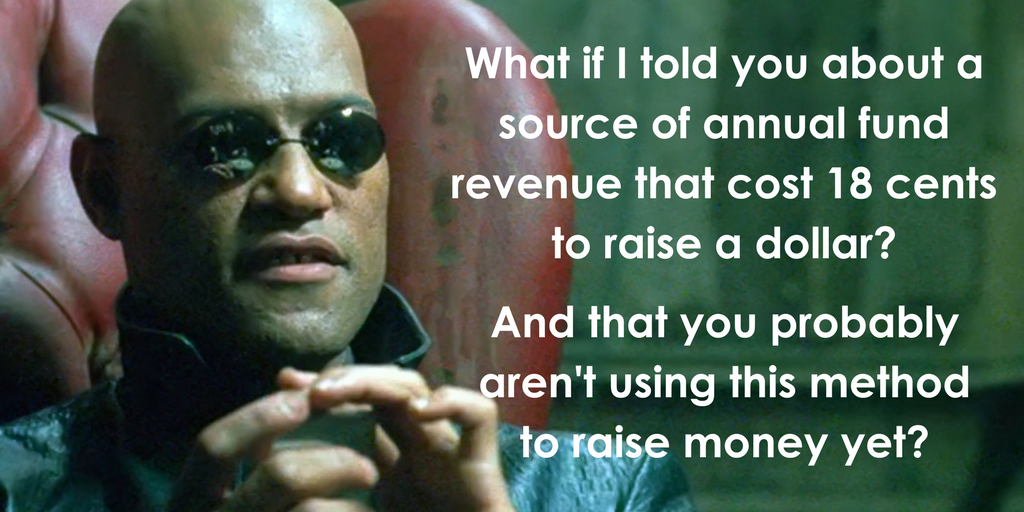
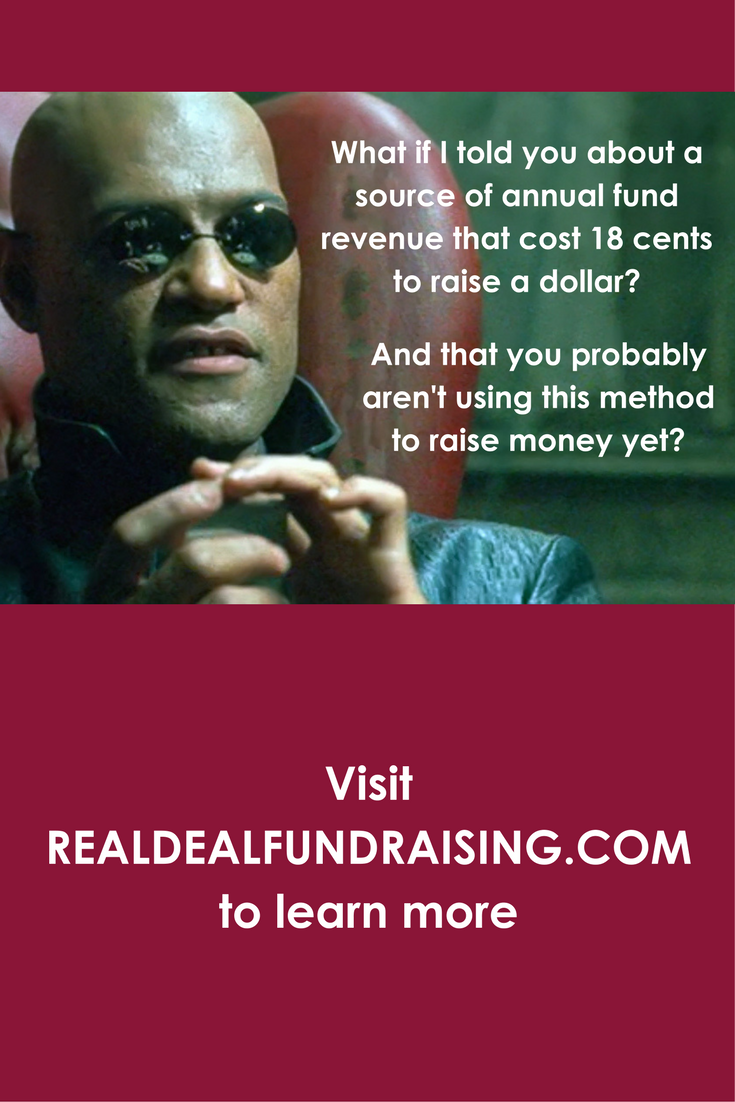
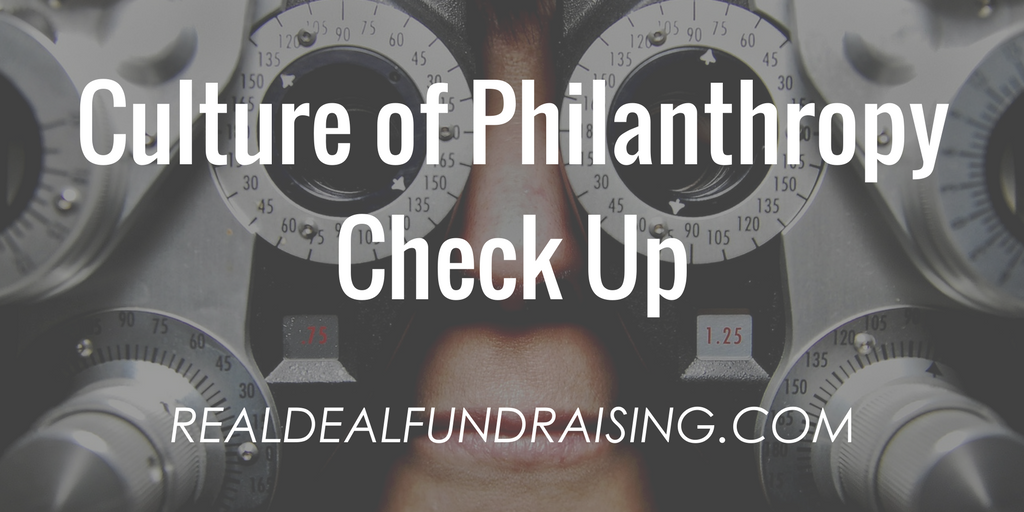
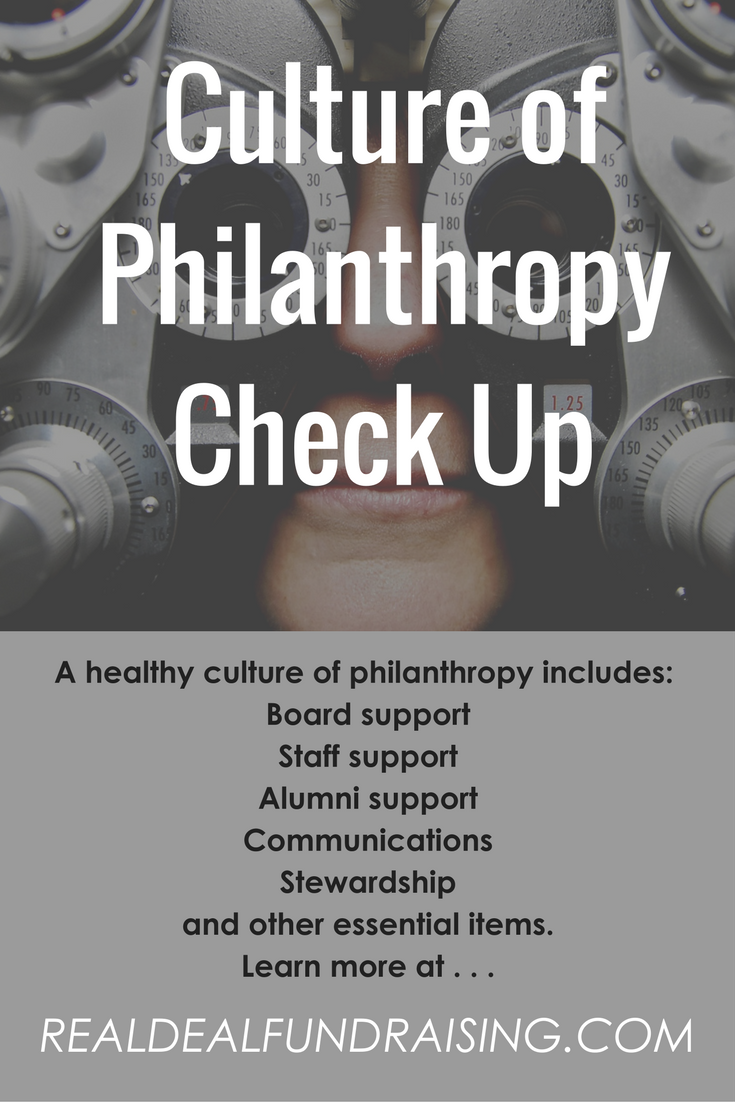
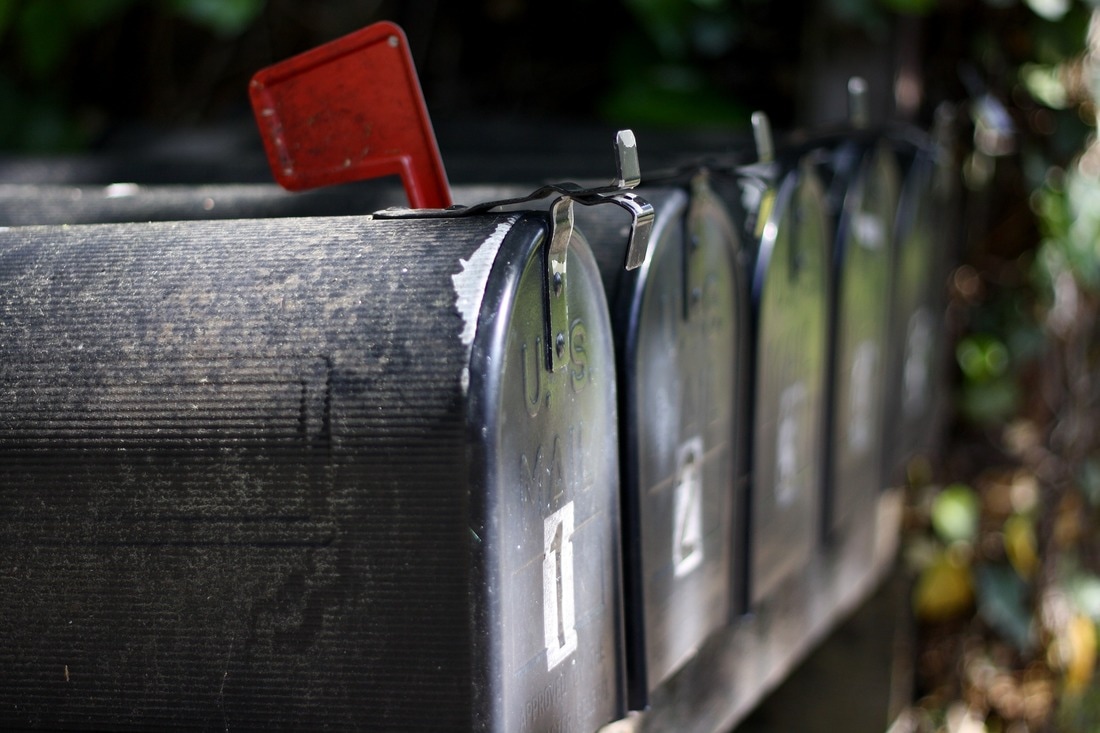
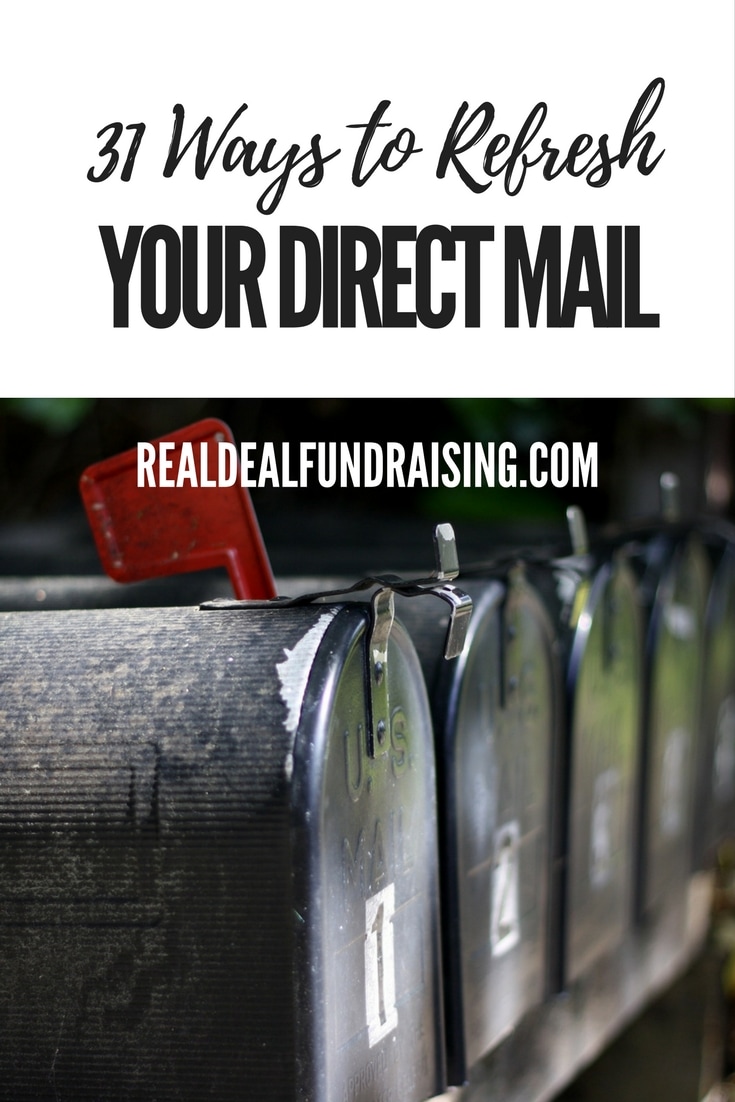
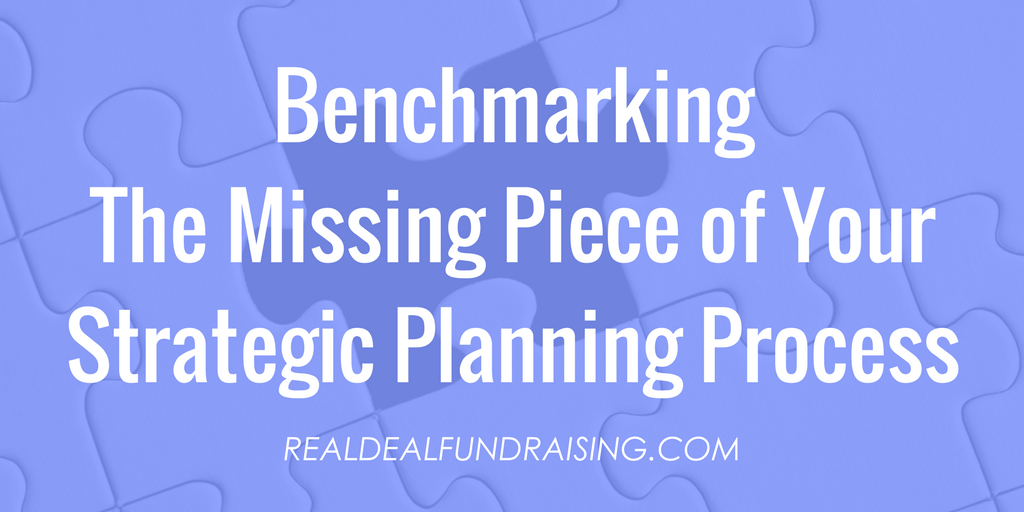
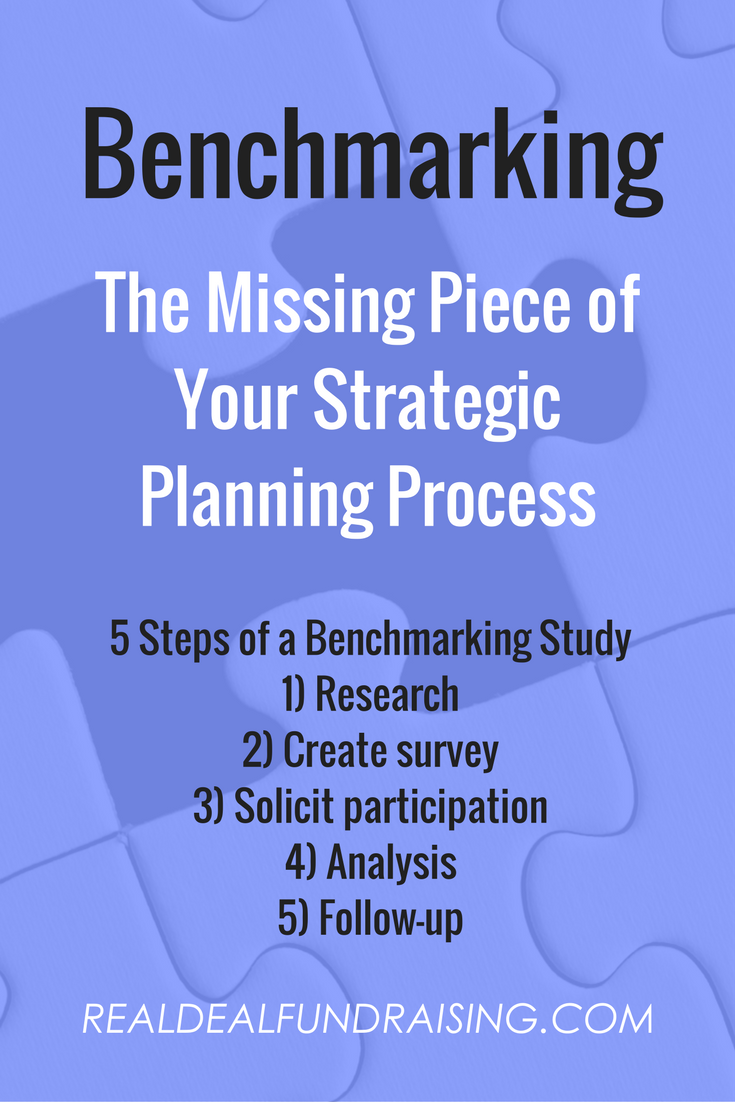

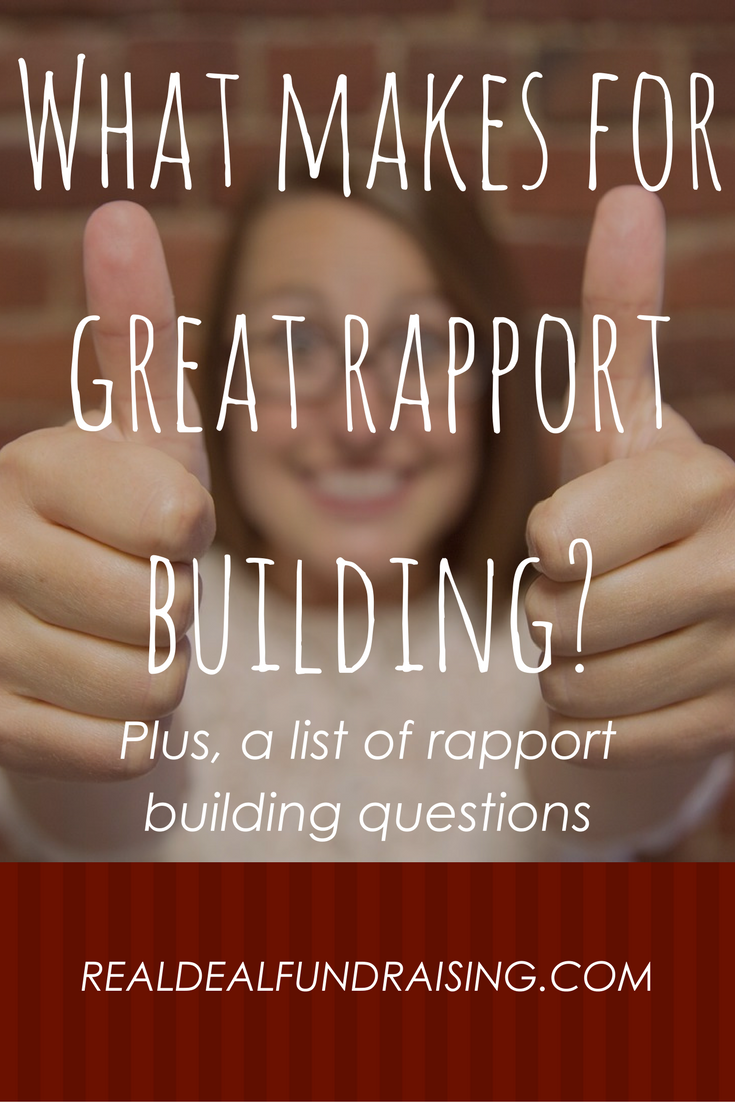
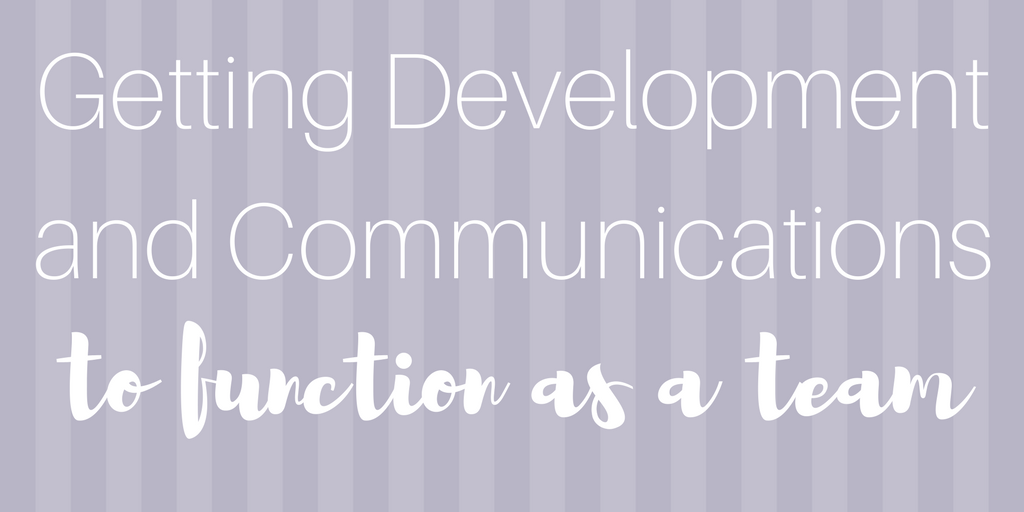
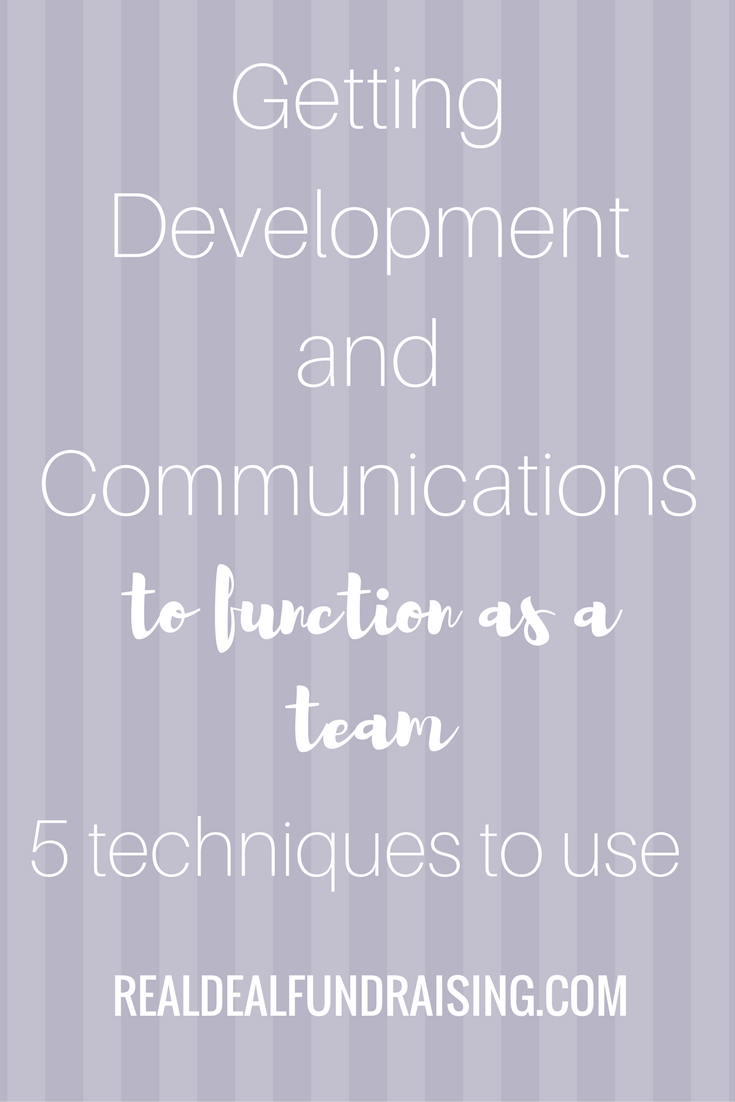
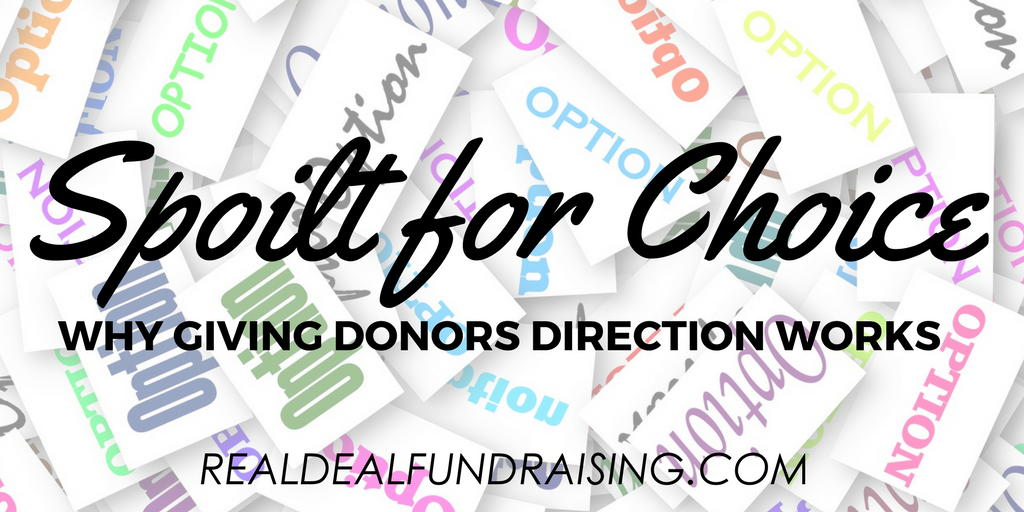
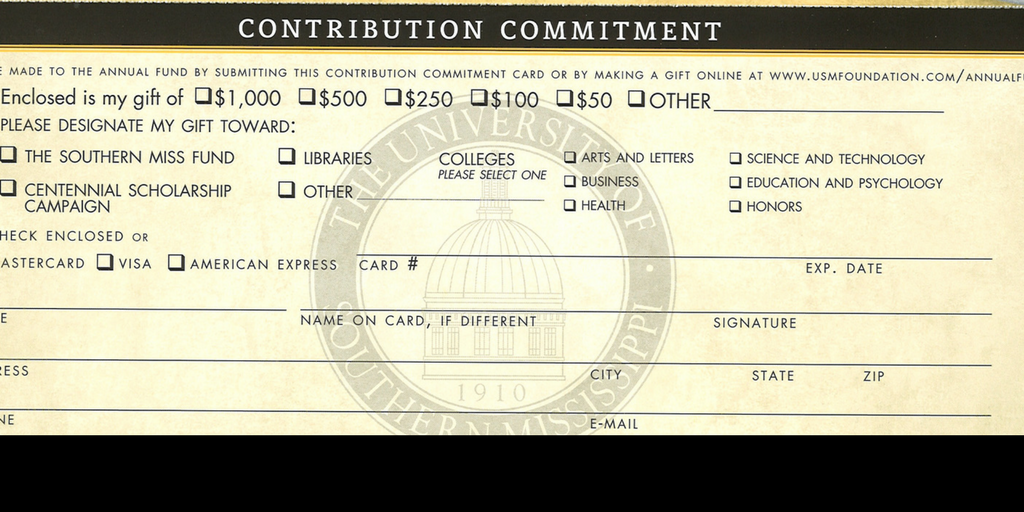
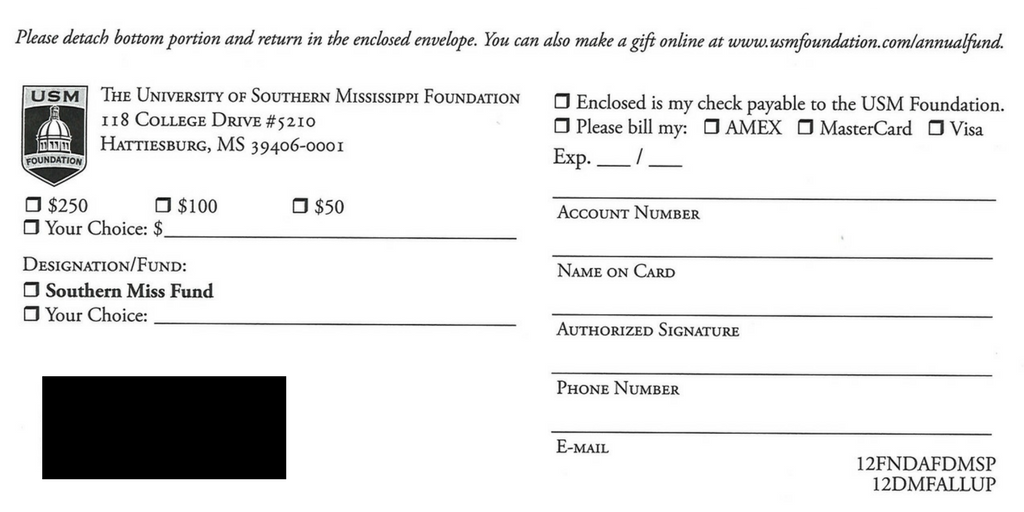
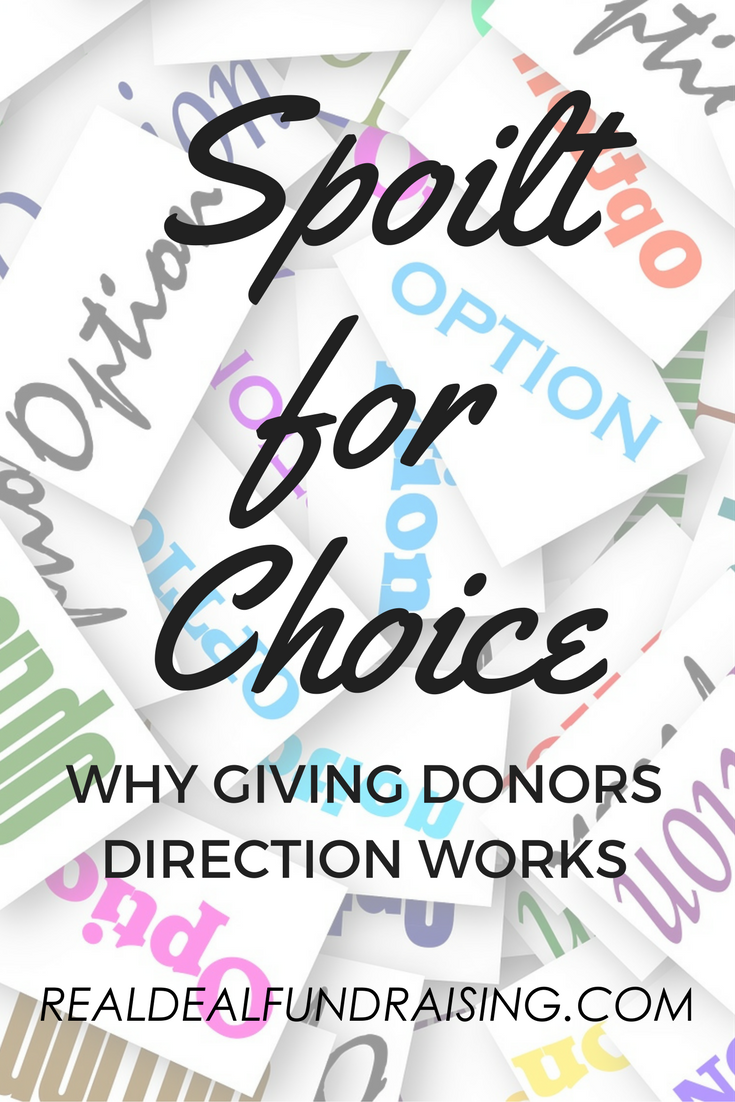
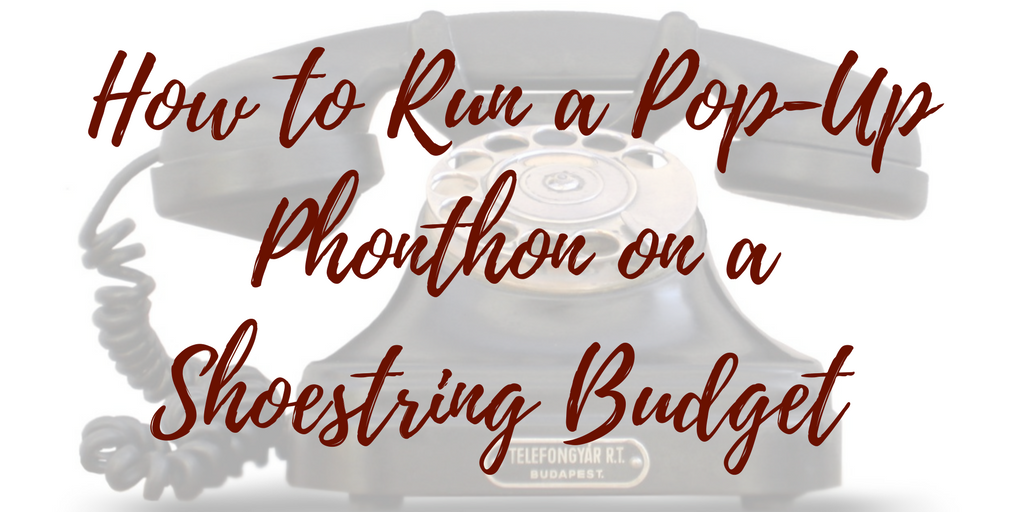


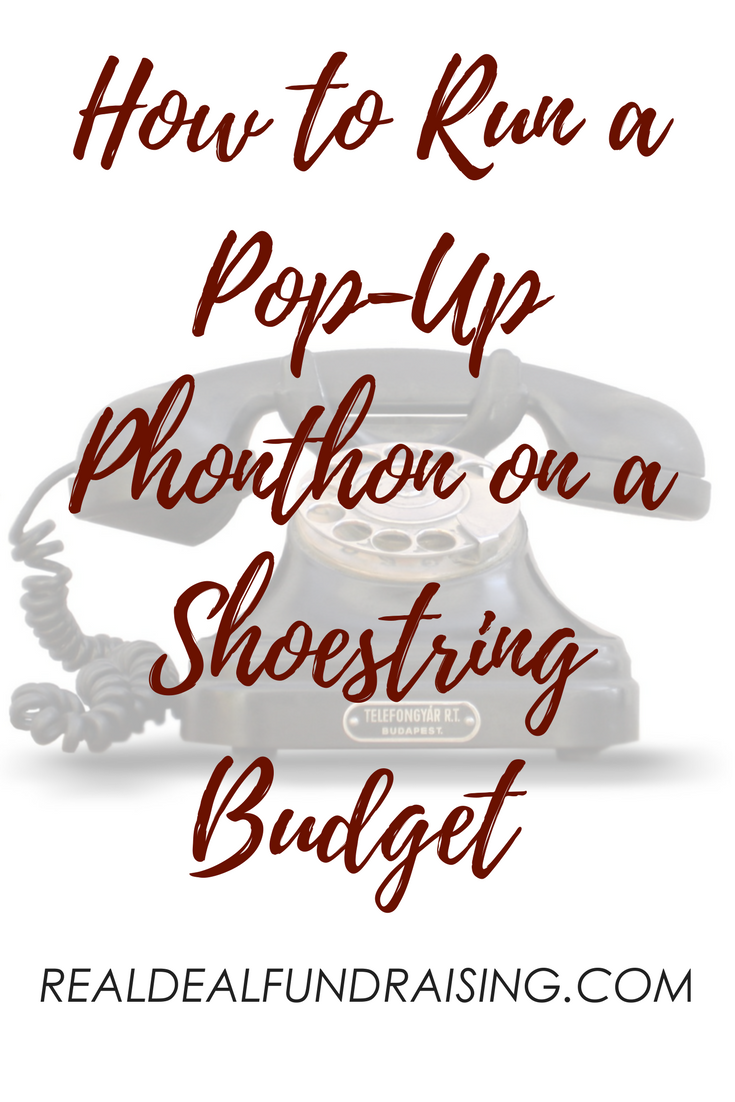


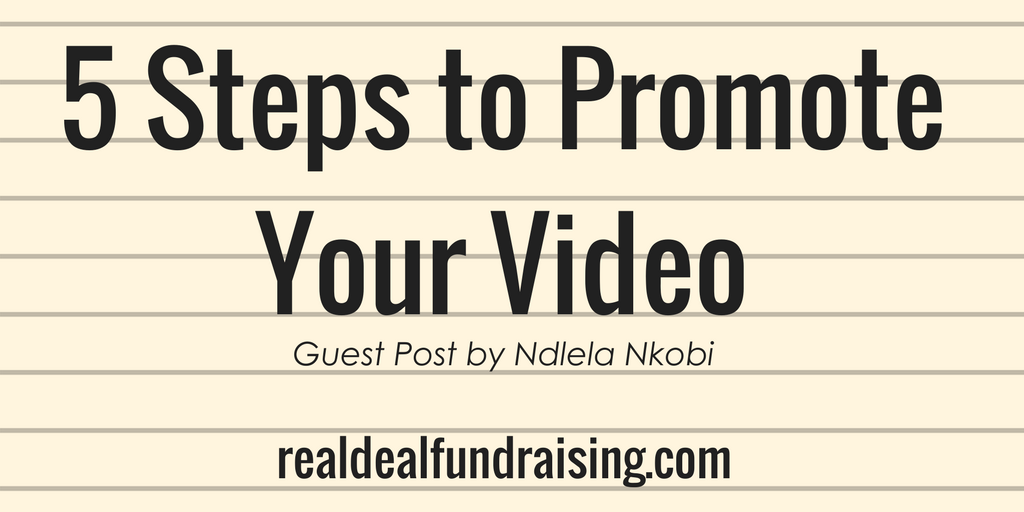
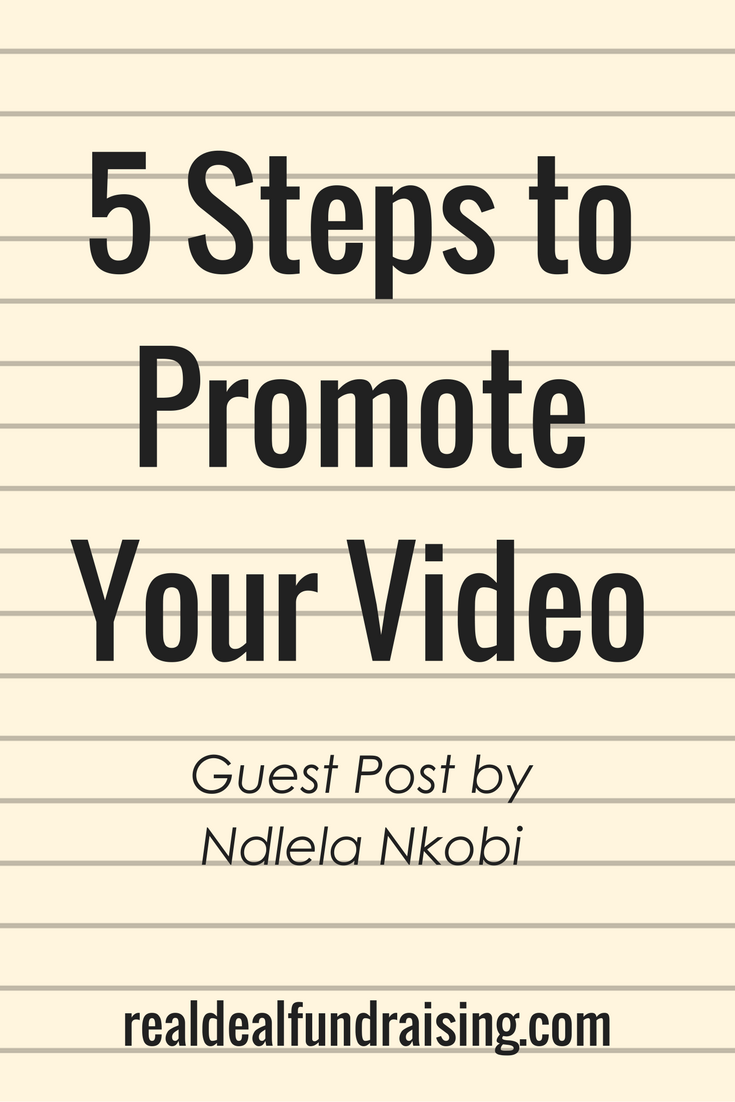

 RSS Feed
RSS Feed
